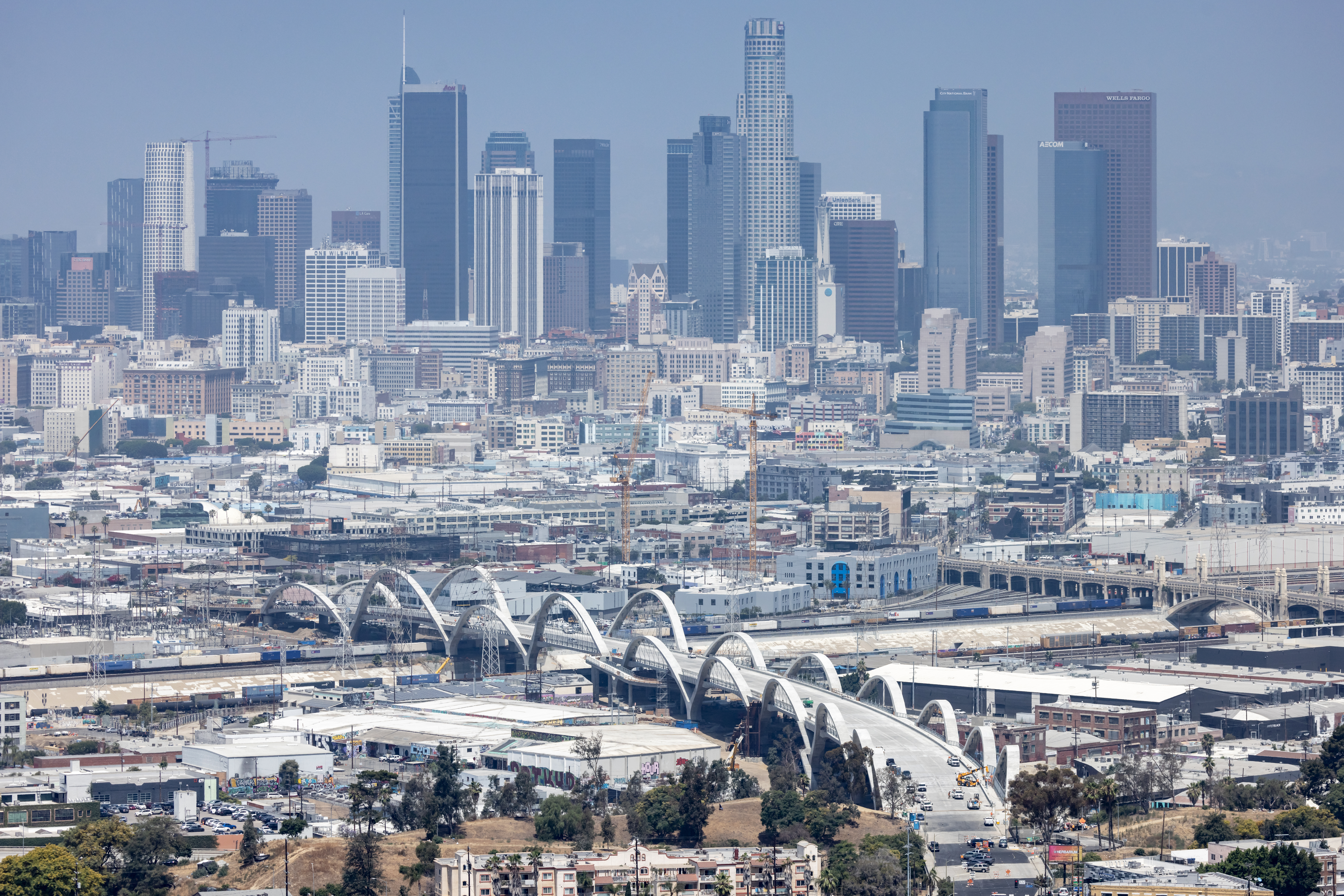The cityscape of Los Angeles has gained an emblematic new traffic structure – The Sixth Street Viaduct. With its 20 concrete arches it is officially deemed to be the largest bridge structure in the city’s history.
by Jakob Schoof
The cityscape of Los Angeles has gained an emblematic new traffic structure – The Sixth Street Viaduct. With its 20 concrete arches it is officially deemed to be the largest bridge structure in the city’s history.
The in-situ concrete arches have a 90-m span on average, vary between ten and 20 m in height and all tilt outwards at a 9 degree angle, significantly contributing to the dynamic silhouette of the bridge. Thanks to 32 earthquake-proof foundations, the entire structure is able to move almost 1 m to the side in the event of an earthquake without being unduly affected.
Although Los Angeles has always been a car city, the civil engineers also put thought to other road users; accordingly the roadway is flanked by bicycle lanes and sidewalks at least 2,40 m wide. Three bike ramps and five pedestrian stairways link the Sixth Street Viaduct to the city neighborhoods around and below the bridge.
Talking of below the bridge, this is where a 5 ha municipal park is to be created on both riverbanks in coming years according to plans by the landscape architects Hargreaves/Jones Associates. In the meantime, LED lights above and below the bridge deck transform the viaduct at night into a long strip of light, explaining why the architects also refer to their project as “Ribbon of Light”.

